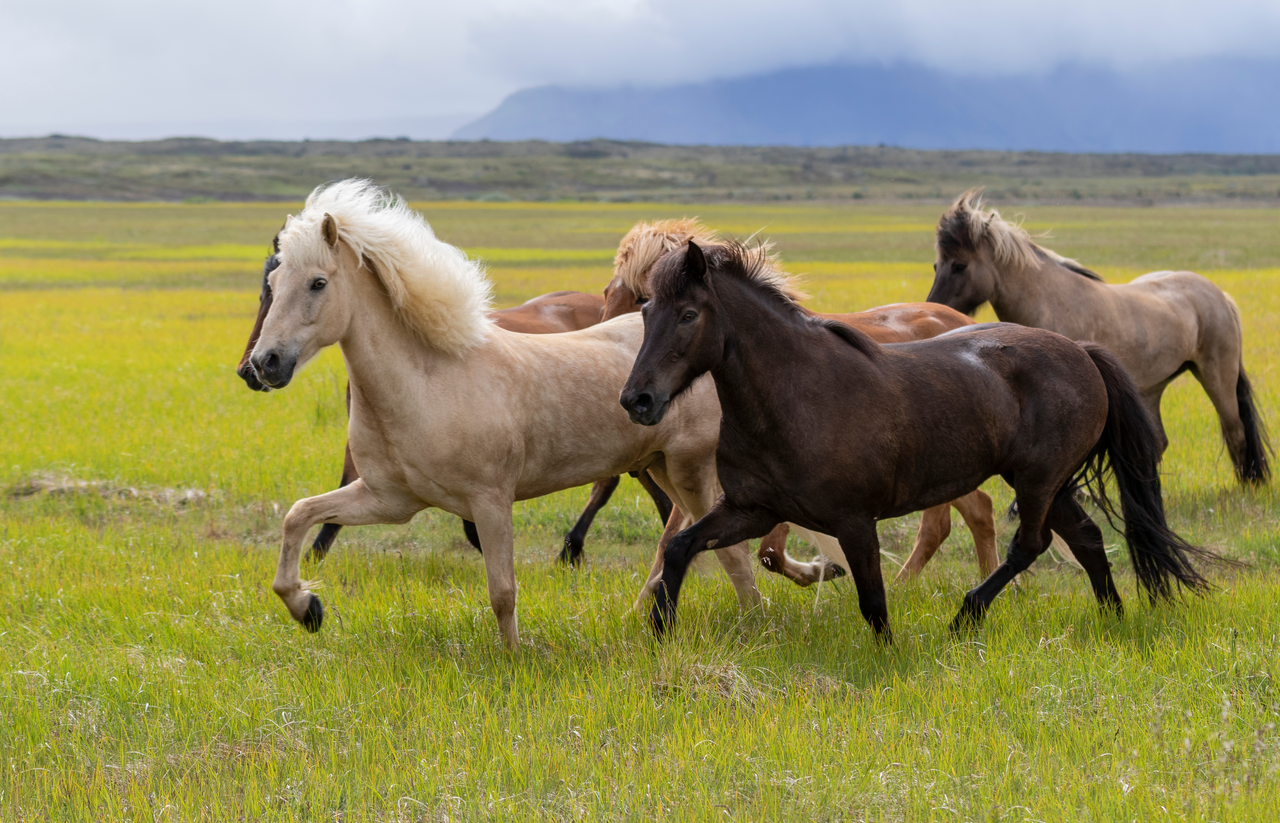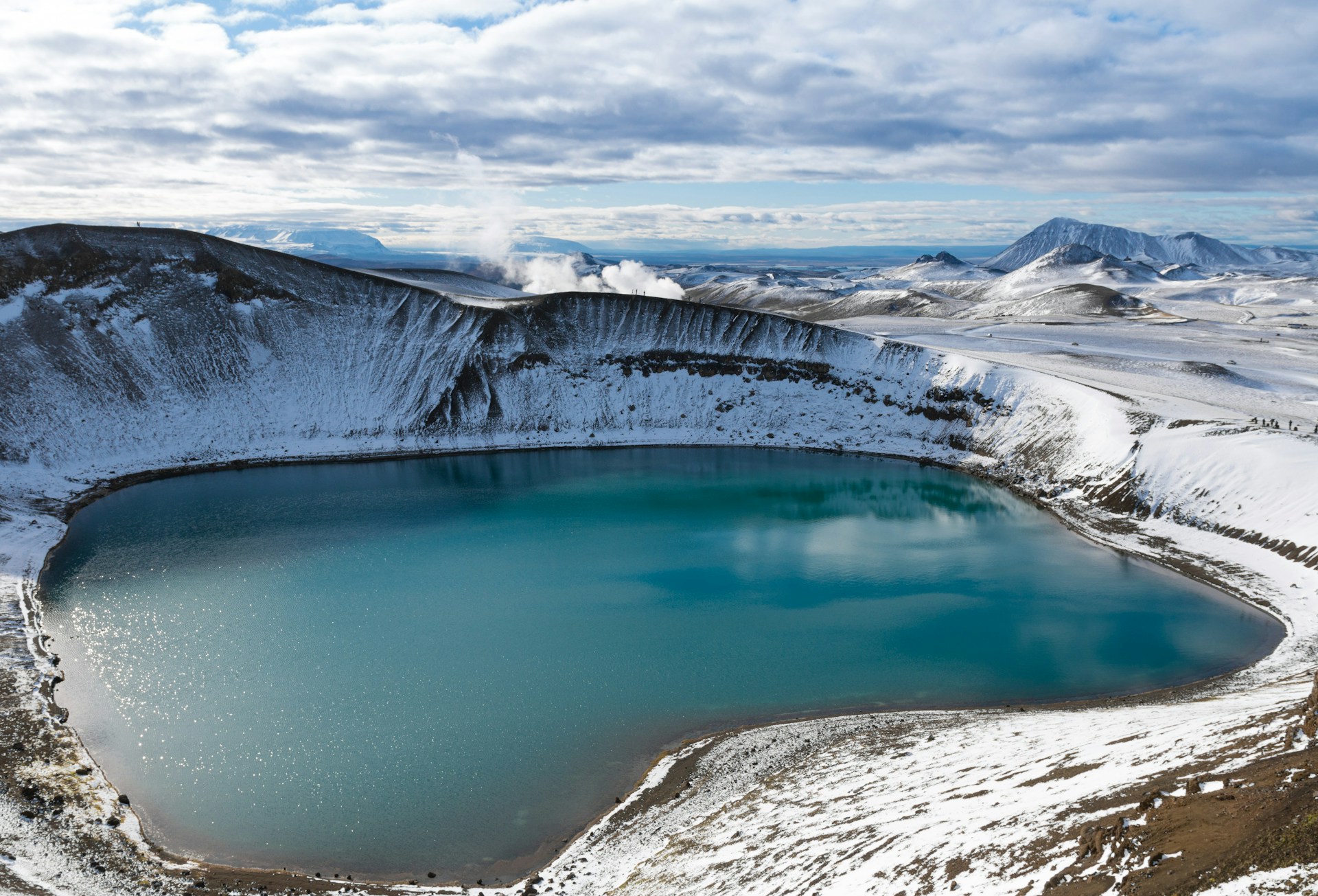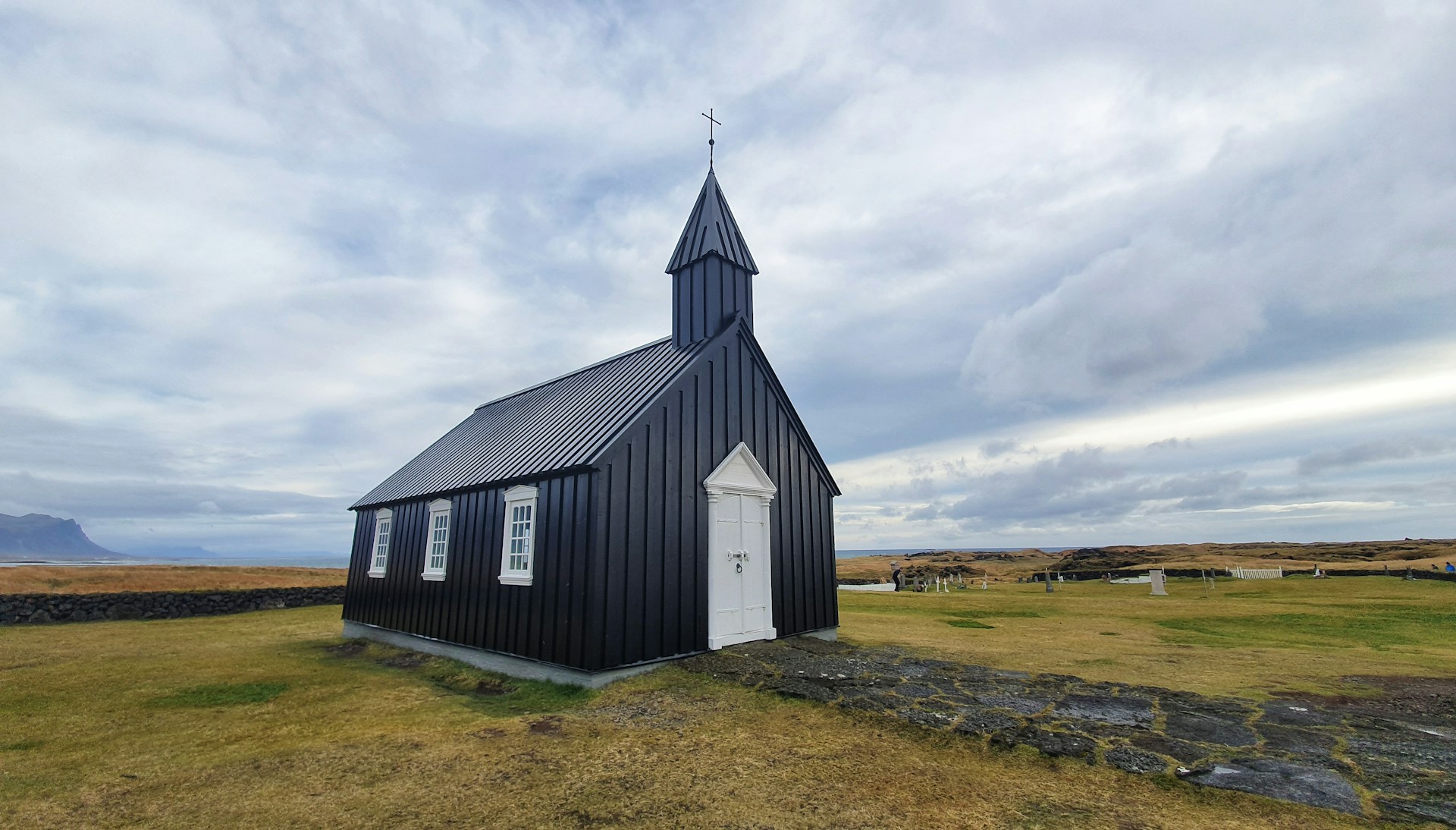Embarking on horseback riding tours in Iceland is an adventure unlike any other. The unique Icelandic landscape, with its vast meadows, rugged lava fields, and serene lakes, offers an ideal backdrop for horseback riding.
Whether you're a seasoned equestrian or a beginner, riding through the Icelandic countryside promises an unforgettable journey.
History of Icelandic Horses
The history of Icelandic horses is a remarkable tale that stretches back millennia. Originating from the Norse settlers who arrived in Iceland during the 9th and 10th centuries, these horses were brought from mainland Scandinavia and the British Isles.
Over the centuries, they have evolved in relative isolation on the island, leading to the pure and unique breed we see today. This isolation was mainly due to strict laws against horse importation to Iceland, ensuring the breed's genetic purity preservation.
Icelandic horses are tiny, often pony-sized, but incredibly sturdy and resilient, essential for survival in Iceland's harsh and rugged terrain. Early Icelandic settlers relied on horses for transportation and agricultural tasks.
One of the most distinctive features of Icelandic horses is their five natural gaits. While most horse breeds have three, Icelandic horses can perform two additional speeds: the tölt, known for its smoothness and allows for comfortable high-speed travel, and the flying pace, a fast gait used mainly in racing.
Throughout Iceland's history, these horses have been more than just animals; they've been integral to the nation's cultural identity and folklore, symbolizing strength and endurance. They remain a cherished part of Icelandic culture, embodying its heritage and spirit.
What are Icelandic Horses Like?
.jpeg)
Icelandic horses are unique and fascinating, known for their distinctive characteristics and qualities that set them apart from other horse breeds. Here are some key aspects that define what Icelandic horses are like:
Size and Build
Icelandic horses are typically pony-sized, standing between 13 and 14 hands tall. Despite their small stature, they are considered horses for their strength, build, and temperament.
They possess a sturdy and compact body, well-suited to the harsh Icelandic climate.
Temperament
These horses are known for their friendly, docile, and curious nature. They are generally easy-going and good-natured, making them suitable for riders of all experience levels, including beginners.
However, their calm demeanor does not hide their spirited and energetic side, especially when running freely.
Coat and Colors
Icelandic horses boast various coat colors, one of the broadest ranges among horse breeds. They come in over 40 colors and more than 100 variations, including dun, palomino, pinto, and roan.
This diversity in coloration adds to their appeal and uniqueness.
Adaptability
Bred for centuries in challenging conditions, Icelandic horses are hardy and resilient. They have adapted well to the harsh Icelandic environment, which includes cold weather, rugged landscapes, and limited resources.
This adaptability makes them particularly robust and long-lived.
International Popularity
Beyond Iceland, the breed has gained popularity in Europe and North America. They are sought after for leisure riding, competitive sports, and their unique ability to perform the tölt and flying pace.
In summary, Icelandic horses are a distinct and versatile breed, cherished for their friendly temperament, unique gaits, diverse colors, and ability to thrive in challenging environments. They are not just horses but a symbol of Icelandic heritage and a testament to the nation's history and resilience.
Role of Horses in Icelandic Culture
Icelandic horses have played a central role in Iceland's culture since their arrival with Norse settlers, forming a deep connection with the nation's identity. Historically crucial for transportation and agriculture in Iceland's challenging terrain, these horses were indispensable for trade, communication, and farm work.
Beyond their practical roles, they are significant in Icelandic folklore and mythology, symbolizing nobility and strength. Though their traditional roles have diminished in contemporary times, they remain a symbol of national pride and cultural heritage, famous for recreational riding and equestrian events.
Icelandic horses also promote Iceland's culture globally, attracting tourists and enhancing international awareness of Icelandic heritage. Their role in Iceland transcends mere utility; they embody the nation's history, mythology, and identity and continue to be a source of pride and cultural connection.
Gaits of the Icelandic Horses

Icelandic horses are renowned for their unique gaits, which set them apart from most other horse breeds. These gaits demonstrate the breed's versatility and adaptability and contribute to their popularity for riding, both in Iceland and internationally.
These diverse gaits, particularly the tölt and flying pace, highlight the unique abilities of Icelandic horses. They enable the horses to navigate Iceland's varied and challenging terrain efficiently and comfortably, making them perfect for leisurely rides and more spirited adventures.
The Allure of Horseback Riding in the Icelandic Countryside
The allure of horseback riding in the Icelandic countryside lies in its unparalleled combination of natural beauty, unique equestrian experiences, and a deep connection with the land and its history. Iceland's dramatic landscapes, ranging from rugged lava fields and rolling hills to serene valleys and stunning coastlines, provide a spectacular backdrop for horseback riding.
Opportunity to Explore Its Diverse Terrain
One of the most captivating aspects of riding in Iceland is the opportunity to explore its diverse terrain on the back of an Icelandic horse, known for its sure-footedness and ability to navigate rough paths. With their gentle demeanor and unique gaits, these horses, especially the smooth tölt, make the riding experience enjoyable for novice and experienced riders alike.
The tölt allows riders to cover varied terrains comfortably, making it possible to traverse long distances while still being able to appreciate the scenery.
Great Experience In the Country's Natural Wonders
Riding through the Icelandic countryside is not just an exercise in equestrian skill; it's an immersive experience of the country's natural wonders. Riders can witness the stark beauty of Iceland's volcanic landscape, ride alongside rivers and waterfalls, and even trot along the black sand beaches in some regions.
The changing seasons add to this allure, with the vivid green of summer, the golden hues of autumn, the ethereal glow of the Northern Lights in winter, and spring's burst of life and color.
Connect With Iceland's History and Traditions
The experience is also deeply ingrained in Icelandic culture. Horseback riding in Iceland allows one to follow in the footsteps of the Vikings who first brought these horses to the island. It's a way to connect with Iceland's history and traditions, where horses have been companions and helpers for centuries.
Moreover, horseback riding tours in Iceland often include interactions with local communities, offering insights into Icelandic rural life. Participants can visit local farms or enjoy traditional Icelandic meals, adding a rich cultural dimension to the adventure.
In essence, the allure of horseback riding in the Icelandic countryside is a blend of natural splendor, cultural heritage, and the unique joy of riding an Icelandic horse. It's an experience that allows for exploring stunning landscapes and offers a deeper understanding and appreciation of Iceland's history and way of life.
Safety Tips in Horseback Riding Journey

Safety is paramount when embarking on a horseback riding journey, especially in the varied terrains of a place like Iceland. Here are some essential tips to ensure a safe and enjoyable experience:
Following these safety tips will help ensure that your horseback riding journey is memorable and safe, allowing you to fully enjoy the unique experience of riding through the stunning landscapes of places like Iceland.
Partner Your Unforgettable Experience with Golden Circle Day Tours
Elevate your Icelandic adventure by combining your horse riding tours with the iconic Golden Circle day tours. This renowned route introduces you to the quintessence of Icelandic nature and its historical landmarks. Your journey begins with the awe-inspiring Gullfoss waterfall, a marvel of South Iceland, where the water's mighty roar and the misty rainbows create an unforgettable spectacle.
The tour then leads you to the historic Þingvellir National Park, a site of geological and historical significance. Riding through this park, you'll traverse the landscape where ancient Vikings once gathered, making it a journey through the heart of Icelandic history.
For those seeking more extensive adventures, multi-day riding tours offer a deeper immersion into the Icelandic countryside. Whether you're an advanced rider seeking challenging terrains or a beginner rider looking for a gentler experience, these tours cater to all skill levels.
Additionally, some tours may offer the chance to witness the magical Northern Lights, adding an ethereal dimension to your experience. Whether a full-day or a half-day tour, each moment spent in the Icelandic outdoors promises a blend of natural beauty and historical intrigue, making your horse riding tour in Iceland a truly unique and comprehensive adventure.
Bottom Line
Embarking on multi-day tours in Iceland presents a unique opportunity to immerse yourself in the country's breathtaking landscapes. These tours cater to everyone, from beginner riders just starting their equestrian journey to advanced riders looking for more challenging terrain.
As you trot through the picturesque Icelandic countryside, the serene beauty and the rhythmic gait of the Icelandic horses create an almost magical riding experience. For those seeking to combine their equestrian adventure with more of Iceland's natural wonders, consider pairing your ride with a Golden Circle day tour.
This popular excursion complements your horseback journey, offering a glimpse into the geothermal marvels and cascading waterfalls that define Iceland's terrain. Furthermore, for a truly mesmerizing experience, embark on a northern lights tour on horseback.
Riding under the ethereal glow of the aurora borealis is an unforgettable experience that adds a mystical dimension to your Icelandic adventure. Whether you're a beginner rider enjoying the gentle trots or an advanced rider galloping across more challenging landscapes, the Icelandic countryside offers something unique.
Let the majestic scenery and the charm of these remarkable Icelandic horses be a highlight of your travels. Embrace the adventure and allow the enchanting Icelandic countryside to unfold, offering a unique perspective on this stunning island nation.





